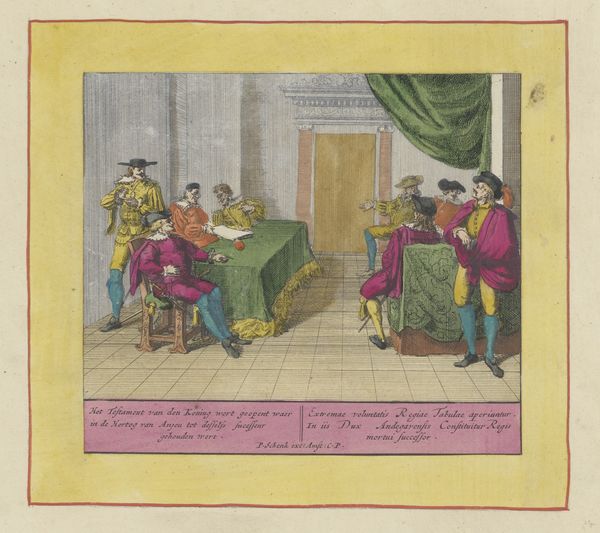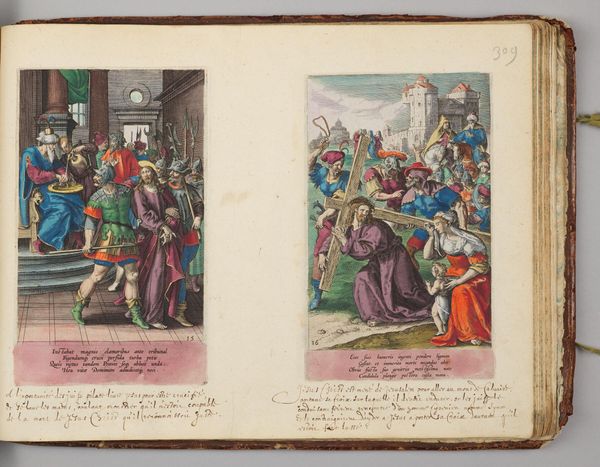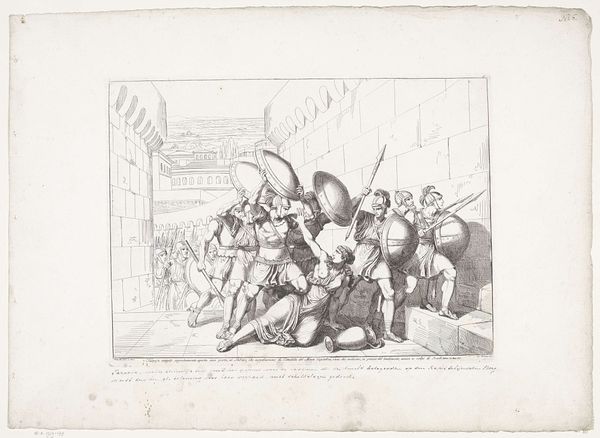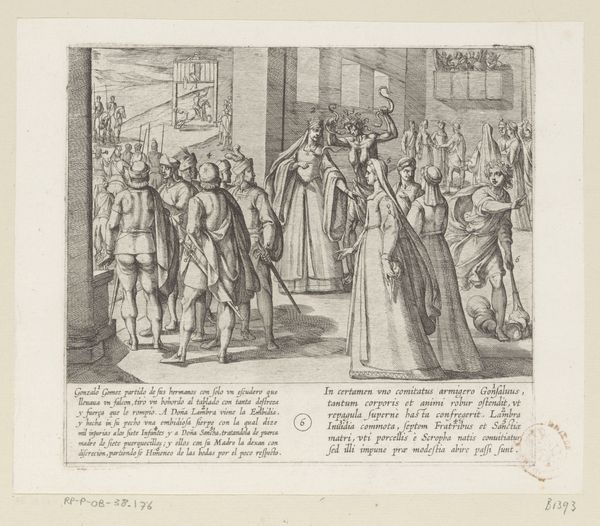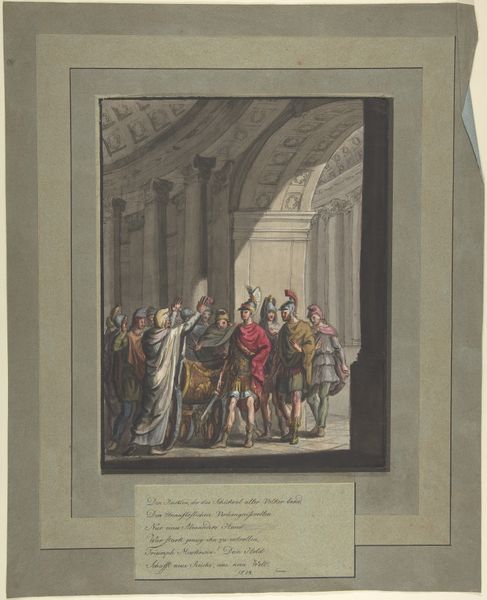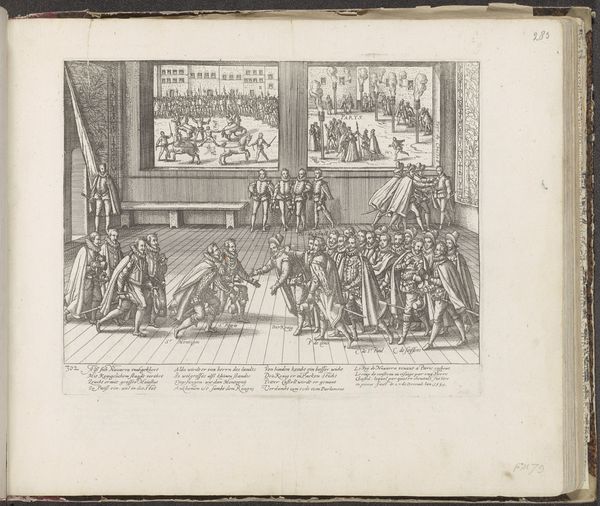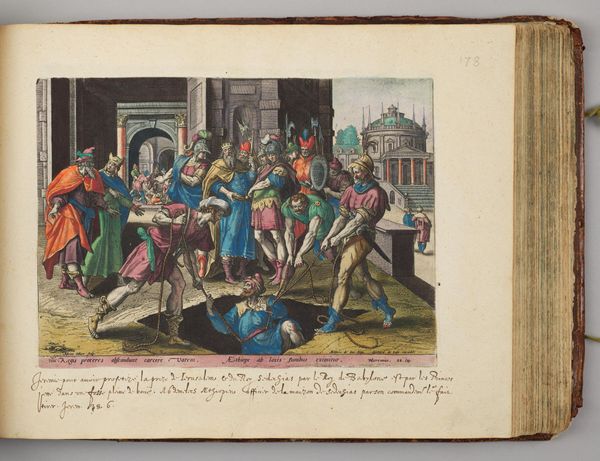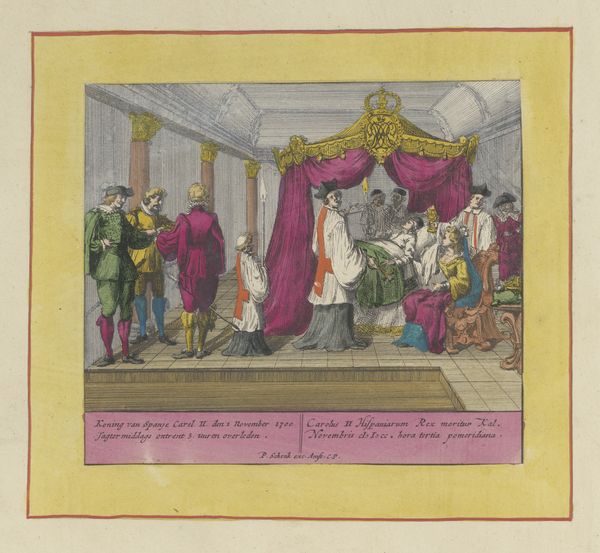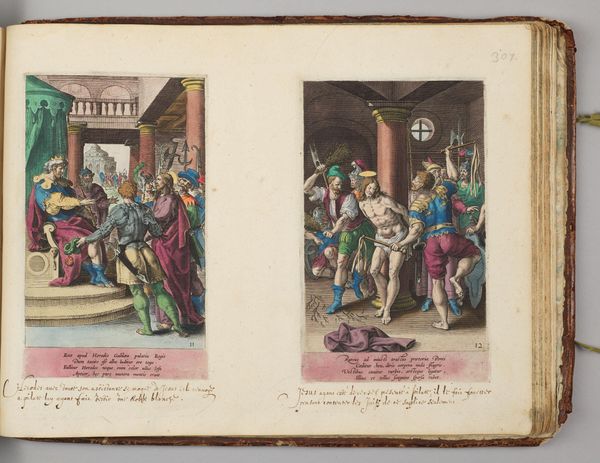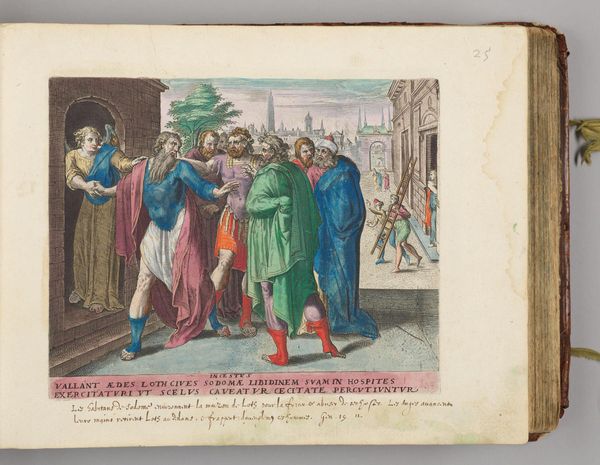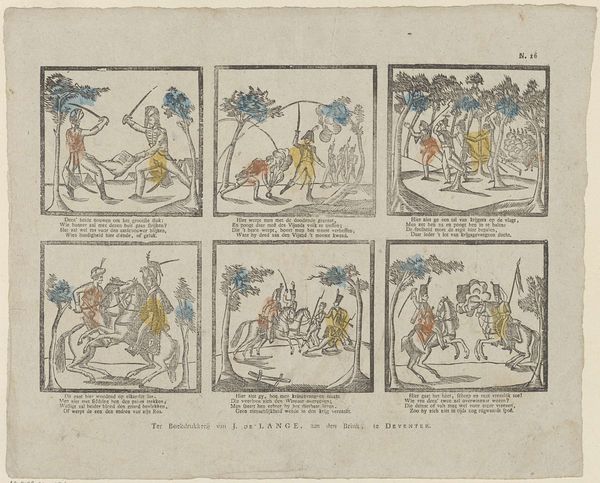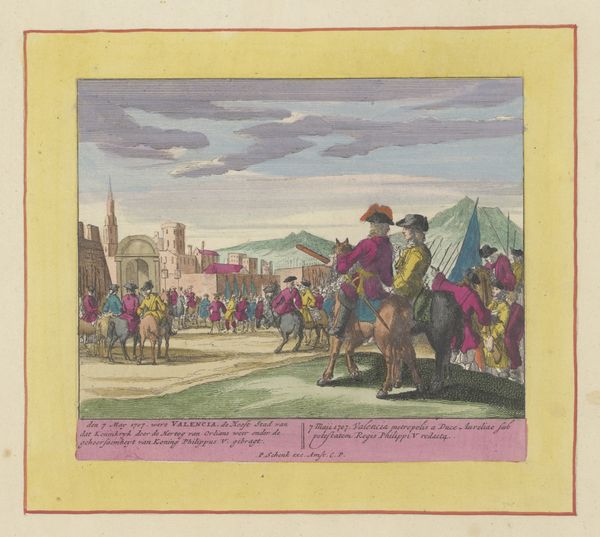
print, watercolor, engraving
#
water colours
#
baroque
# print
#
watercolor
#
watercolour illustration
#
history-painting
#
engraving
#
watercolor
Dimensions: height 152 mm, width 178 mm
Copyright: Rijks Museum: Open Domain
Curator: This print, residing here at the Rijksmuseum, captures a rather significant moment. It's entitled "Filips van Anjou tot koning uitgeroepen, 1700" made between 1706 and 1720 by Pieter Schenk. A somewhat stiff and formal scene, rendered through engraving and watercolor. Editor: Stiff is right! The figures almost seem like paper dolls, yet those vibrant washes of color, almost jewel-toned, create a sense of…theatricality, perhaps? And there is this pervasive aura of... authority, of declaration. The composition, framed by those buildings, directs the eye toward the figures proclaiming someone new, I am not sure who yet. Curator: Well, the print commemorates the proclamation of Philip of Anjou as King of Spain in November 1700. Consider the historical context, The War of Spanish Succession was about to unfold, ignited by this very event, as other European powers contested the claim of a Bourbon, Philip, to the Spanish throne. Editor: Ah, power struggles visualized. It makes one consider what declarations are about in the first place. Look at the different expressions... who supports, and who objects? And do we see that anywhere in this engraving? Curator: Schenk doesn’t exactly reveal much emotional depth, does he? These figures seem primarily symbolic, their gestures more about conveying the act of proclamation itself rather than hinting at any inner conflict. But perhaps, the relative rigidity is revealing on its own. What about these Baroque stylings in this watercolor print? Editor: It gives us all this visual information that it is still rooted in reality! Yet Schenk made sure we understand that everything needs to feel larger than life for its own sake. But to think about the function of this "historical painting", maybe what it portrays is pure spectacle... propoganda maybe? After all, someone, somewhere, was paying Schenk to create *this* narrative. What did they want people to see and think? Curator: Yes, in essence, this is about projecting an image of legitimacy and triumph during a very volatile period, and also to promote an individual, by promoting a particular visual idea of history and legitimacy. It’s fascinating how artistic style becomes interwoven with the politics of image-making, as it still is to this day. Editor: Exactly, the artwork encapsulates how art, even something as seemingly straightforward as a historical depiction, becomes a contested space where ideology and artistry engage in this delicate dance. This work reminds us not only of what occurred then but the forces determining how it’s represented for future consumption.
Comments
No comments
Be the first to comment and join the conversation on the ultimate creative platform.

